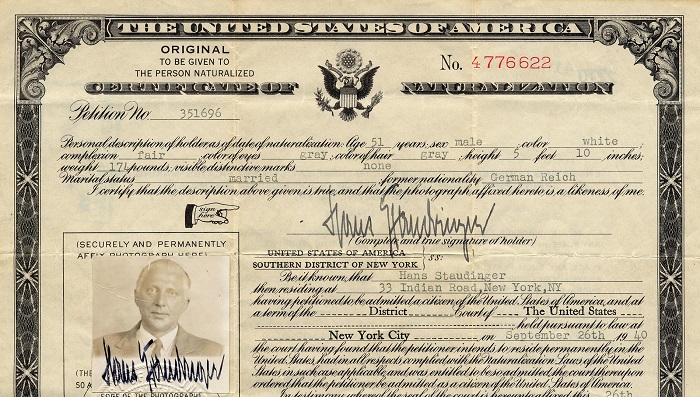Collections : [German and Jewish Intellectual Émigré Collections]
German and Jewish Intellectual Émigré Collections
Personal and professional papers of German-speaking Émigré in the social sciences, humanities, and the arts and the organizations which assisted those who fled the Nazi regime.
Search Constraints
Start Over You searched for: Collecting Area German and Jewish Intellectual Émigré Collections Remove constraint Collecting Area: German and Jewish Intellectual Émigré Collections Date range 1908 to 1909 Remove constraint Date range: <span class="from" data-blrl-begin="1908">1908</span> to <span class="to" data-blrl-end="1909">1909</span>Search Results
Emil Lederer Papers, 1901-1971 1.0 cubic ft.
Walter Sorell Papers, Undated 0.17 cubic ft.
The series consists of two main sections: family documents and records, and biographical materials and documents of Albert (Leser) Lestoque. The family documents consist primarily of documents pertaining to the family estate known as Auf'm Rech located in the Plittersdorf section of Bonn, Germany. The records consist of land purchase records of various pieces of property primarily in Bonn, as well as records of furniture and art purchases for the property in Plittersdorf. Additional records pertaining to the property, as well as documents and materials pertaining to other family members are found in the Paul Leser Papers.
Alfred C. Oppler Papers, 1908-1982 2.75 cubic ft.
Biographical Material, ca. 1908-1982 0.05 cubic ft.
This series contains materials that shed light upon Oppler's personal and professional life. Included are a photocopy of a book of poems authored by Oppler's father Leo, photographs, and photocopies of his published obituaries. Also included are a handful of materials documenting his daughter Ellen's career as an art historian.
Alfred Werner Papers, 1903-1979 23 cubic ft.
This series contains only a small amount of materials, but includes a short autobiographical sketch, written by Werner shortly after coming to the United States, as well as lexicon and other articles describing Werner's work as an art historian.
Arnold Brecht Papers, 1865-1974 14.67 cubic ft.
The materials in this series document Brecht's life and career, both in Germany before 1933, as well as after his arrival in the United States. This series contains a number of documents relating to Brecht's career as Counsellor in the Reich Ministries of Justice (1910-1917) and Economics (1918), and the Reich Chancellry (1918-1921), as well as Ministerial Director in the Reich Ministry of the Interior (1921-1927) and various other ministries including the Prussian State Ministry and Finance Ministry (1927-1933), until his final dismissal by Hitler in 1933. Also included in this series are materials related to Brecht's activities as Expert to the Secretary of the Army (1948), as well as materials pertaining to HICOG (High Commissioner for Germany).
Autobiographical and Biographical Material, 1892-1963 0.5 cubic ft.
Contains diaries and memoirs, passport, certificates, curriculum vitae, photographs, newspaper clippings (biographical and obituaries).
This series contains a complete life story and family history of the Kühnel/Knight family, illustrated with old photographs, documents, and correspondence. Also included in this series are short biographical statements and publications lists.
Max Knight Papers, 1909-1993 4 cubic ft.
Biographical, 1896-1971 2.58 cubic ft.
This series contains biographical information regarding Greta Hartwig and Kurt Manschinger, including important legal documents surrounding their flight from Austria, brief autobiographical profiles of Kurt and Greta, Greta's daily calendars, legal materials related to Mela Hartwig and Robert Spira, plus many photographs of the Manschinger and Hartwig families.
This series contains autobiographical essays by Pachter, both in manuscript and published form, as well as writings about Pachter, including memorials by colleagues after his death in 1980. Also included in this series is a small amount of correspondence dealing with employment, and a few letters from contemporaries, including Thomas Mann and Martin Jay.
Henry M. Pachter (Heinz Paechter) Papers, 1907-1987 8.49 cubic ft.
- « Previous
- Next »
- 1
- 2
- 3
